Articles
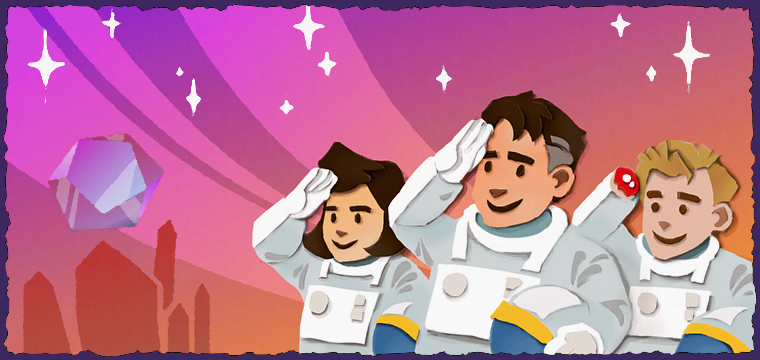
LucasArts' Secret History #11: The Dig Our Review
The Dig is one of those entertainment projects whose long and tumultuous history makes for more compelling material than the final product itself. This is not a knock on the end result, which is a worthy adventure game in its own right, but this title's legacy has more to do with it redefining development hell than anything else. Begun as early as 1989, game was started and stopped repeatedly across no less than three iterations before finally being released in 1995 (making it the lengthiest adventure production in the studio's history), marking the end of what many might call LEC's golden era. While the weakest link in LucasArts' adventure line-up, The Dig is a solid, memorable and commercial successful story game with many strengths, and its troubled development is fascinating history.
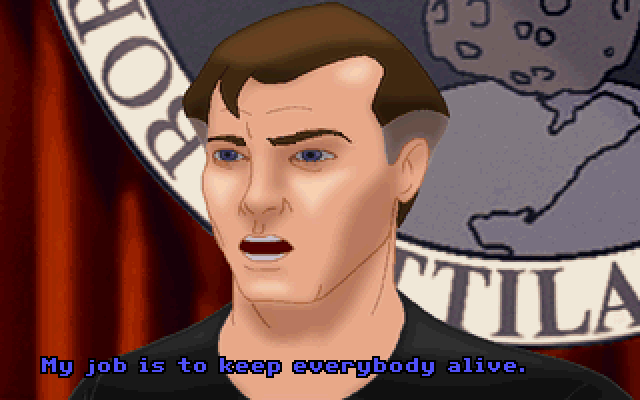
The initial spark for The Dig came from none other than Steven Spielberg, who conceived a premise that he initially thought to use it as a plot for his Amazing Stories television series. In a nutshell, the idea was Treasure of the Sierra Madre meets Forbidden Planet - a story involving a team of astronauts who wind up on a forsaken alien planet and struggle as much in their growing distrust for each other as with their dangerous environment in their efforts to survive and hopefully escape. For logistical reasons, the story never made it to the small screen (nor the big screen, an isolated possibility that had been rumored at one point), but Spielberg decided to bring the idea to his buddy George's video game studio. (Spielberg has always been a notable fan of video games, and old-timers of LucasArts have recalled that the curious director would drop by the studio to see what the developers were working on more often than Lucas himself did.)
A team was assigned to build a graphic adventure game out of Spielberg's basic idea in 1989. The project was to be led by Last Crusade's Noah Falstein with Dave Grossman, who spent some time on the project between his duties on the first two Monkey Island games, on design. Artist Bill Eaken also volunteered concept work and helped flesh out the game world and a visual style. After a conceptualization period that envisioned a game unafraid to torch sacred cows - among the proposed gameplay ideas was the inclusion of RPG-like survival elements such as the constant need for food and water - this incarnation was shelved.
Later, the project was returned to, but restarted effectively from scratch. The new team was led by Loom's Brian Moriarty and including relative newcomer Bill Tiller on the art side. Eventually, the reset button was hit again. More than once. The scrapped attempts are referenced in the end credits of the final game by the inclusion of a "Ghosts of Dig's Past" section that acknowledges the various developers who'd had their hands on the game over the years. Such a cursed production probably would have killed any game not under the personal protection of George Lucas, who insisted that it be completed, which it ultimately was under the direction of Sean Clark, co-project leader of Sam & Max Hit the Road. The game's problematic development is documented through countless interviews, pieces of discarded art, and otherwise the dedicated detective work of die-hard fans (the fruits of which are routed to later in this article), complete with intriguing details and glimpses what might have been; the only thing we can actually judge, however, is the game in its final form.
The storyline begins on present day Earth at a space observatory in Borneo, where it is discovered that an asteroid named Attila is on a devastating collision course with our planet. NASA immediately puts together a small team in an attempt to shift the path of the trajectory out of Earth's way through the calculated placement of two small nuclear explosives. This mission is successful, but after the charges are laid and detonated, the Average Joe, survivalist Commander Boston Low reveals to the other two members of his landing team – independent journalist/linguistics expert Maggie Robbins and extensively trained German archeologist Ludger Brink - that a second purpose of the mission is to investigate the asteroid for evidence of alien origin. In exploring the asteroid's hollow interior, the enigmatic space debris turns out to be a starship that the team inadvertently activates, and the three astronauts wind up in another solar system on the desolate terrain of an apparently abandoned planet with Earth-like qualities (such as atmosphere, gravity, and breathable air) but which is otherwise less than inviting due to its state of decay and plethora of dangers.
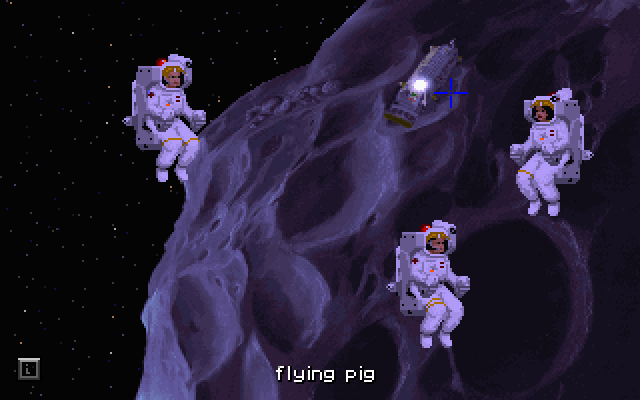
In looking for a means to return home or at the very least prepare for long term survival, Brink is killed in a digging accident, leaving Low and Maggie to explore the remnants of what was evidently a civilization of sophisticated beings. They discover a holographic library, mysterious ghost-like guides, and advanced, fully functional machinery (such as spherical trams that the characters initially use to get around the planet). Early on, Low stumbles upon a stash of green "life" crystals which successfully resurrect Brink, who finds himself stronger than ever upon revival but with an irrational personality and an obsession with collecting life crystals in bulk.
As tensions mount between the team and Brink's insanity increases, Low and Maggie separately and collaboratively begin to learn more about the planet's past and the fate of the beings who once called it home, beings who it turns out may not be entirely extinct. The game tells an intriguing story, and I personally appreciate its emphasis on archeology despite falling squarely under the science fiction genre. As others have observed, the proceedings often feel like "Indiana Jones in space," and it is during these moments that the game is at its best.
After the rather effective opening credits cutscene which depicts the circumstances that bring the protagonists to space, the player is given control of Commander Low, hovering with the two other members of his landing team over the space shuttle, preparing to begin their work on the surface of Attila. Once the game hits the alien planet after this brief, linear prologue, the story begins in earnest, giving way to a lengthy, challenging, and relatively nonlinear adventure game that will be particularly pleasing to those who like their puzzles high on difficulty and low on sanity.
The game runs on a version of the SCUMM engine, which seems like a no-brainer (all LEC adventure since Maniac Mansion were) but was actually a last-minute decision. Prior to Sean Clark taking control of the reigns, the game was running on a brand new story system dubbed StoryDroid to address some of the game's technical innovations, though from the look of screenshots we have of this incarnation the changes must have been far more obvious on the programmer's side than on the end user's. Whatever hurdles were experienced in getting there, the gameplay of the final The Dig is extremely familiar, and in a good way. Its interface, like Full Throttle's, is heavily streamlined and features no onscreen verbs, providing the game world with the whole screen. The inventory is accessed by a right-click, with the repudiation of item combination still in force.
What The Dig adopts for the first time is a "one click does all" mechanic that bears many similarities to what one encounters in a Telltale game. When the player hovers over an interactive hotspot, a sentence line (brought back after a brief absence) will name the object, and clicking on it will result in Boston taking whatever action is natural, such as it picking it up if it's a loose object or talking to it if it's a character. Like Full Throttle but in a somewhat different way, the designers make streamlining the gameplay a priority.
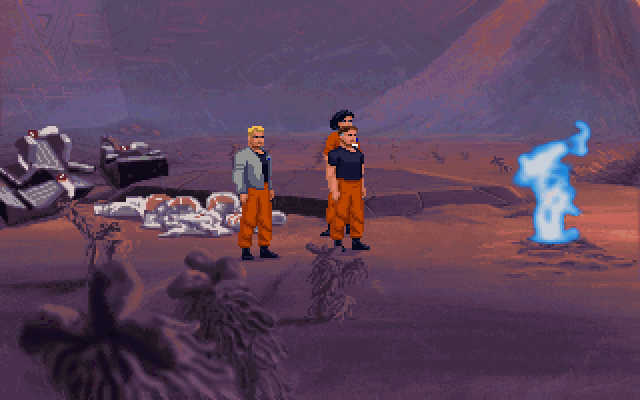
Another new element of note is the "PenUltimate" found in Boston's inventory. In addition to being the source of a minigame, this PDA-like device allows Boston to communicate with the other members of his team, and will often be used automatically in the game to drive the story forward. It is through this device that most dialog trees are instigated, though they are in a Hit the Road- like icon form rather than text. Although Boston is the only playable character, interaction between the crew is important throughout the game, as Boston often finds himself in need of vital information that only his fellow team members have. (Their clashing personalities often get in the way of a smooth relationship, which is where the Sierra Madre influence comes in). A few "Easter egg" type gags are hidden within some conversation trees, and the game even dusts off an old tradition by including a slightly alternate ending based on a decision you have Low make near the climax.
The biggest strengths of the game, however, are unrelated to gameplay, solid though it is. The tone of the production is a departure from any LEC adventure before it (with Loom and to a lesser extent Full Throttle coming closest) in that the game takes itself completely seriously. There is humor to be found, to be sure, but the game is a drama, not a jokefest.
While the thick, lonely atmosphere of this game makes for an absorbing experience and the extraordinary visuals and wonderful soundtrack imbue the game with a kind of unsettling, eerie beauty, the writing prevents LucasArts' rare foray into the realm of the heavy and the solemn from being entirely successful. While the story is engrossing enough, the dialog (credited to Sean Clark and Orson Scott Card, whose work reportedly represents the final of countless revisions) is a mixed bag, which stands out for LucasArts, whose adventure games are well known for patter that crackles.
A reputation that this game has acquired is that of a black sheep because it is not as comic as its lineage; I disagree. Although it certainly has different aspirations than the likes of Monkey Island or Sam & Max, I argue that it is not the game's relative humorlessness that makes it stand out as perhaps of a lesser caliber than the company's other output. Any direction can be successful, but The Dig's storytelling isn't as consistently strong as it might have been, it is a bit too reliant on stock personalities, and the sometimes cheesy dialog struggles to carry the game's weighty tone. (The exchange that occurs after Brink's "death," for example, doesn't have the resonance that it feels like it really should.) These faults aside, The Dig still stands as above average compared to contemporary competition outside of its own studio, and it does take the company graphic adventures into new and entirely welcome territory.
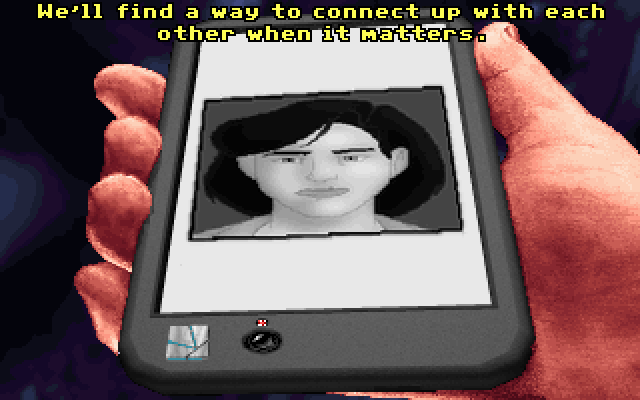
From a technical standpoint, The Dig looks a bit inferior to Full Throttle, which was released earlier in the same year. This disparity, which is mostly with regard to the characters and cutscene work, is not surprising considering how long the game was in development. The character sprites are a bit lacking in detail, and the numerous FMV cutscenes, while well-animated, are done in a cartoony style that feels jarring by comparison to the in-game look, which, while not super-realistic, feels like it belongs to a different game.
Those issues are trifles, though, and The Dig is another triumph of presentation. The near two hundred backgrounds of this epic-sized game were and remain stunning and are peppered with nice enhancement effects that lend them extra life, from subtle water ripples to the extensive use of 3D models, the latter used to render some of the strange creatures that roam the planet. The quality of the visuals is also indebted to the animation reliably terrific animation. Armed with a distinct and gorgeous game world, The Dig's visual style and artwork may very well be its greatest asset.
Coming in close second is surely the soundtrack, which as always was subtly supported by the iMUSE system. Composed by Michael Land, the Wagnerian music of the game has a simultaneously majestic and somber vibe, and in combination with the visuals is kind of spellbinding. The voice acting, as one would expect, is also generally above average. The talented and well-suited cast is led by film actor Robert Patrick, who voices army-trained Boston Low, and who doesn't look all that dissimilar to his computer character counterpart. I think compared to Full Throttle the voicework comes off as slightly hokier, though I find it hard to figure out if the sometimes iffy nature of line delivery is the fault of the actor, the dialog itself, or both. The technology can also be fingered to some degree - it is no doubt a tall order, especially with the still severe limitations on the timing of delivery, for drama to be pulled off with great success. With humor, flaws and technical constraints can be made light of, but with serious tone, all is laid bare. As with the writing, I might judge the voice acting as acceptable for the company that it was produced by, and superb by most other standards.
It's interesting to note that The Dig is, according to LucasArts, the most successful adventure game it ever put out, said to have pushed 300,000 units worldwide. Even with those kinds of numbers, it's hard to imagine that the game's no doubt astronomical budget was a whole lot more than recouped, and one wonders how much of a factor Spielberg's name on the box was in propelling copies off store shelves. Nonetheless, its success is impressive, especially in the face of mixed reviews and a decidedly split reaction among gamers. Between it and the smash hit Full Throttle, 1995 was a banner year for LucasArts adventure games. Unfortunately, even such successes would turn out to be insufficient for the long-term relevancy of genre, which was retaining the same market size while production budgets and competing genres were growing fast, and The Dig marks the end of an era for the company where adventure games were quick too be greenlit by the management and gobbled up by customers. But even if sales were not destined to be upwardly mobile, the quality was not on the decline. Indeed, two of the three remaining graphic adventures the company had left in it are arguably the best it ever put out, a stark contrast with the less than awesome internal state the company would find itself in during that era.
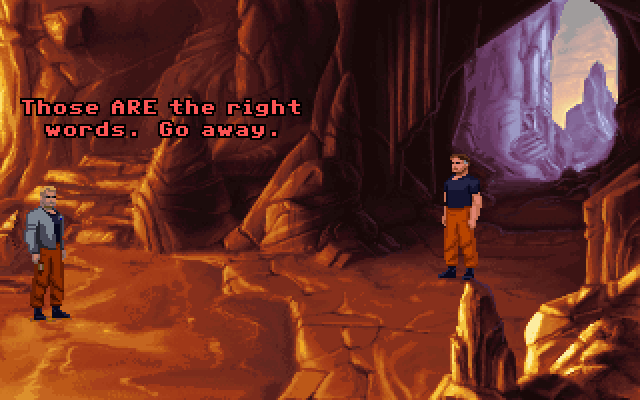
The Dig is not a bad game; it is to this author's lights merely the most obvious weak spot in a line-up that is mostly occupied by incontrovertible masterpieces. It's a memorable, haunting story title with a deserved following, and is both a worthy addition to any self-respecting graphic adventure aficionado's library, and a necessary addition to anyone who calls themselves an LEC adventure fan. Although the story behind how it got made might be more gripping than its own, there's no denying that the journey of NASA's Low, Brink and Robbins is one worth taking, and it is a chapter in the LEC legacy deserving of its position among the adventures of Guybrush, Manny, Bernard and Ben.
A review by Jason, who doesn’t go sticking his hand into cracks.
Three out of five Murray skulls
Pros: Brilliant art, animation, soundtrack and atmosphere; gloomy tone complements intriguing storyline; streamlined gameplay
Cons: Often inane puzzles makes the gameplay too difficult for anyone besides adventure experts; writing and voice acting more passable than great; slightly outdated (for its time) tech with incongruous cutscene visuals